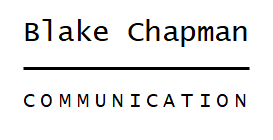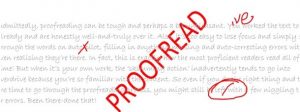Congratulations: you’ve written the last word, and fixed the last edit. You’re so close! But one pesky little thing still stands between you and submission: the dreaded proofread.
Admittedly, proofreading can be tough and perhaps a bit unpleasant. You’ve worked the text to death already and are honestly well-and-truly over it. Also, it’s too easy to lose focus and simply skim through the words on autopilot, filling in anything missing and auto-correcting errors without even realising they’re there. In fact, this is exactly how the most proficient readers read all of the time! But when it’s your own work, the ‘skimming action’ inadvertently tends to go into overdrive because you’re so familiar with the content. So even if you do the right thing and take the time to go through the proofreading process, you might still be left with a few niggling typos or errors. Been there-done that!
In some situations, an error here or there is easily overlooked (not to mention completely forgivable, since, like I said, we’ve all been there!). However, in other cases, nothing short of perfection is expected. And when the number of individual, seemingly minor typos adds up, your credibility and professionalism may start to come into question. Typos, grammatical errors and awkward sentence structure can also negatively impact on readability. After you’ve put so much time and effort into your work, this is surely not the outcome you’d be hoping for – or the way you’d like to be remembered by your audience.
How can you prevent these proofreading blunders? Here are some of my suggestions:
- AWAY. FROM. THE WRITING! If you’re planning on proofreading your own work, great! But do yourself a favour, and give yourself a break. Once you’ve finished drafting and finalising the text, pack it up and forget about it for as long as possible (within reason, of course). This will help you to re-set, and allow you to be a bit fresher (and therefore more tuned-in to the detail) when you do come back for the proofread. I once found a substantial error in a book manuscript I had written the very last time I got to see it before it went to press. I was only supposed to be approving the final typesetting, so had a very short window to turn the document around. But luckily, I used that time to do one last full read-through. In the text, I was detailing the difference between two commonly (but incorrectly) interchanged terms. Then, when I actually went to make my point, I used the wrong one of the two. This not only made the sentence completely wrong, but contradicted the exact point I was trying to make through the paragraph more broadly. So, in conclusion, it would have made me look really silly, and I dare say, greatly reduced my credibility for the rest of the text. By the time I noticed this error, I had already reviewed and worked through the text extensively, had it externally copy-edited, read by two editors, re-read it again myself, then had it externally proofread. I only managed to pick-up on this mistake after I’d been away from the material for quite a significant period. Errors and typos happen! But you will always be the expert on your own work and no one will ever know it as well as you do! Therefore, making the time to do this type of review yourself is definitely worth it, and by putting some time between you and your work, you’re more likely to catch these sorts of things, as well as any less-significant typos.
- Buddy-up! Okay, let’s be realistic. Highly recommended, or not, no one actually allows time for a break between finishing their writing and doing the final proofread. In fact, if you leave time for a proofread at all, you’d be ahead of the curve! There is almost always a deadline at-hand, and most of us use every last second of our time (and maybe a few seconds more) to refine and perfect the content. This doesn’t leave a lot of opportunity for a break, only to come back later refreshed, revitalised and raring to proofread. This is where a buddy can come in handy. Find someone who you trust to exchange work with in a mutually beneficial proofreading partnership. Or, if proofreading really isn’t your cup of tea, give them your work for whatever you can provide in return. I’ve bartered my proofreading time with friends in the past for coffee, babysitting, cocktails… all the essentials! So, find a grammar-savvy friend and start doing some detective work to figure out what their soft-spot might be.
- When in doubt, contract out: You don’t have time to mess around; you just need it done, and done well. You need a professional proofreader! Professional proofreading services are especially beneficial if English isn’t your native language. Or, if your document is really long and you know you don’t stand a chance of finding a friend who is that indebted to you. Yes, you will have to pay for this service. But proofreading is a skill, and it probably takes far more time than you’d like to believe. The benefit? Well, the work gets done to a very high quality, and you don’t have to do it! Instead, your work is reviewed by a completely fresh set of eyes with no familiarity to the text. The added bonus is that proofreaders who aren’t in your field or discipline will quickly pick-up on any unexplained technical lingo or jargon that your readers may also not understand. A win for readability and comprehension! Contracting your proofreading work out means that you’ve gained all of that time back, which can be dedicated to whatever the next most-pressing job might be. Or… maybe just for a well-earned break! After all, I lost your full attention at the mention of coffee and cocktails, didn’t I?

